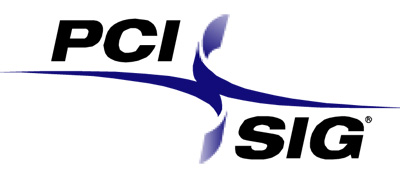AMD's Radeon HD 6990: The New Single Card King
by Ryan Smith on March 8, 2011 12:01 AM EST- Posted in
- AMD
- Radeon HD 6990
- GPUs
PCI-Express Compliance: Does It Even Matter?
For a while now we’ve been under the impression that video card size and power consumption was ultimately capped by the PCI-Express specification. At present time the specification and its addendums specify normal (75W), 150W, 225W, and 300W PCIe card operation. In the case of 300W cards in particular this is achieved through 75W from the PCIe slot, 75W from a 6pin PCIe power connector, and 150W from an 8pin PCIe power connector. As the name implies, the PCIe specification also defines what the 6pin and 8pin power connectors are supposed to be capable of, which is where 75W and 150W come from respectively.
Altogether the biggest, most powerful card configuration in the PCIe specification allows for a 12.283” long, triple-wide card that consumes 300W. To date we’ve never seen a card exceed the physical specifications, but we’ve seen several cards exceed the electrical specifications. This includes cards such as the 5970 and some overclocking-oriented 5870s that were designed to handle more than 300W when overclocked, and even more exotic cards such as the Asus ARES 5870X2 that simply drew more than 300W from the get-go. We have yet to see a reference design from AMD/NVIDIA however that exceeds any part of the PCIe specification by default.

So it has been clear for some time now that cards can exceed the PCIe specifications without incurring the immediately wrath of an army of lawyers, but at the same time this doesn’t establish what the benefits or losses are of being or not being PCIe compliant. To have a reference design exceed the PCIe specifications is certainly a new mark for the GPU industry, so we decided to get right to the bottom of the matter and get an answer to the following question: does PCI-Express compliance matter?
To answer this question we went to two parties. The first of which was of course AMD, whose product is in question. AMD’s answer basically amounts to a polite deflection: it’s an ultra-enthusiast card that at default settings does not exceed the power available by the combination of the PCIe slot and PCIe power connectors. Furthermore, as they correctly note, the 6990 is not the first card to ship at over 300W, as the ARES and other cards were drawing more than 300W a year ago. It’s a polite answer that glosses over the fact that no, the 6990 isn’t technically PCIe compliant.
To get a second opinion on the matter we went straight to the source: The Peripheral Component Interconnect Special Interest Group (PCI-SIG), which is the industry group that defines the PCIe standard and runs the workshops that test for product compliance. The PCI-SIG’s member list is virtually everyone in the computing industry, including AMD, NVIDIA, and Intel, so everyone has some level of representation with the group.

So what does the PCI-SIG think about cards such as the 6990 which exceed the PCIe specification? In a nutshell, they don’t directly care. The group’s working philosophy is closer to approving cards that work than it is about strictly enforcing standards, so their direct interest in the matter is limited. The holy grail of the PCI-SIG is the PCI Express Integrators List, which lists all the motherboards and add-on cards that have passed compliance testing. The principal purpose of the list is to help OEMs and system integrators choose hardware, relying on the list and by extension PCI-SIG testing to confirm that the product meets the PCIe standards, so that they can be sure it will work in their systems.
The Integrators List is more or less exclusively OEM focused, which means it has little significance for niche products such as the 6990 which is split between end-user installation and highly customized OEM builds. The 6990 does not need to be on the list to be sold to its target market. Similarly the 5970 was never submitted/approved for listing, and we wouldn’t expect the 6990 to be submitted either.
It is worth noting however that while the PCI-SIG does have power specifications, they’re not a principal concern of the group and they want to avoid doing anything that would limit product innovation. While the 300W specification was laid out under the belief that a further specification would not be necessary, the PCI-SIG does not even test for power specification compliance under their current compliance testing procedures. Conceivably the 6990 could be submitted and could pass the test, leading to it being labeled PCIe compliant. Of course it’s equally conceivable that the PCI-SIG could start doing power compliance testing if it became an issue…
At the end of the day as the PCI-SIG is a pro-compliance organization as opposed to being a standard-enforcement organization, there’s little to lose for AMD or their partners by not being compliant with the PCIe power specifications. By not having passed compliance testing the only “penalty” for AMD is that they cannot claim the 6990 is PCIe compliant; funny enough they can even use the PCIe logo (we’ve already seen a Sapphire 6990 box with it). So does PCIe compliance matter? For mainstream products PCIe compliance matters for the purposes of getting OEM sales; for everything else including niche products like the 6990, PCIe compliance does not matter.










130 Comments
View All Comments
EmmetBrown - Tuesday, March 8, 2011 - link
Nice, but what about the Radeon HD 6450, 6570 and 6670?http://en.wikipedia.org/wiki/Comparison_of_ATI_Gra...
Why they are available for OEM only? They looks interesting, especially the 6670, which with its 480 SP should be faster than the 5670 which has 400 SP and lower frequency. Do you plan to review them?
Ryan Smith - Tuesday, March 8, 2011 - link
As you note, they're OEM only. AMD will release them to the retail market eventually, but clearly they're not in a hurry. It's unlikely we'll review them until then, as OEM cards are difficult to come by.misfit410 - Tuesday, March 8, 2011 - link
I have to ask, if you bring up the price and say that you might as well do two 6950's in SLI when this thing doubles the performance of the GTX580, I mean would it also not be the better solution than a GTX580 which is $500 while two 6950's can apparently double it for $550 being they can be found for $225 after rebates these days.Figaro56 - Tuesday, March 8, 2011 - link
You sound a little confused. You can't run ATI cards in SLI, they run in what is called crossfire (or crossfirex which is the same thing). Two 6950's don't equal GTX580 in SLI. You need two HD 6970 cards in crossfire to nearly equal two GTX580 in SLI.In my opinion, why limit your performance with 2 HD 6950 cards, why not just bye the 2 HD 6970 cards and never have to second guess if you should have or not? But... That's just me. I have a job.
silverblue - Tuesday, March 8, 2011 - link
Totally unnecessary closing comment there, considering most people here do actually have jobs. Not everyone who has a job can afford such gear as there's more important things to spend money on.Thanny - Tuesday, March 8, 2011 - link
You sound confused, too. He miswrote SLI, but you misunderstood his point entirely. He's saying that two 6950's are significantly faster than a single 580 for almost the same price.Loiosh - Tuesday, March 8, 2011 - link
Hey guys, you forgot one other usage case that would necessitate this card: ATI+physx setup: http://www.shackpics.com/viewer.x?file=DumbVideoca...I'm currently running one and it requires a dual-GPU card. :/
In my case I'm waiting for a watercooled version. BTW, you didn't say the release date for this?
nanajuuyon - Wednesday, March 9, 2011 - link
Funny after reading this review I went into town (Tokyo) to buy a new hard disk and saw this card for sale. So in Japan at least it is already on the market..... price was ridiculous though, 79,000YEN or $945 US..... I'm sure it will be available everywhere soon.Waterblocks on the other hand could be a couple month or so away I guess...
Vinas - Tuesday, March 8, 2011 - link
If you buy this you better have it on water. 'nuff said about all this tri slot cooler talk.JPForums - Tuesday, March 8, 2011 - link
First off, nice article Ryan.Good data, relevant commentaries on said data, and conclusions.
You mention in the article that you believe some of the shortcomings of the 6990 to be a lack of PCIe bandwidth. This got me thinking that perhaps it is a good time to revisit the effect of PCIe bandwidth on modern cards. Given the P67 only natively supports 16 lanes, I'm curious to see what effect it has on CF/SLI. It could make big difference in the recommended hardware for various levels of gaming systems.
Typically, someone looking for a CF/SLI setup will get a board that supports more lanes. However, I have seen a situation where a friend built a budget i5 system and about 4 months later was in a position to acquire an HD5970 on the cheap (relatively speaking). Clearly, two HD5850s/HD5870s would have been an option.
If newer cards are effectively PCIe bandwidth limited, then a 6990 may perform more closely to an HD6970 CF setup in such a system than it does in these graphs. This would be even more of a consideration at the high end if the rare boards with support for 4x8 lane (spaced) PCIe give you no real benefit over a more common 2x16 lane board (comparing 4 HD6970s to 2 HD6990s).